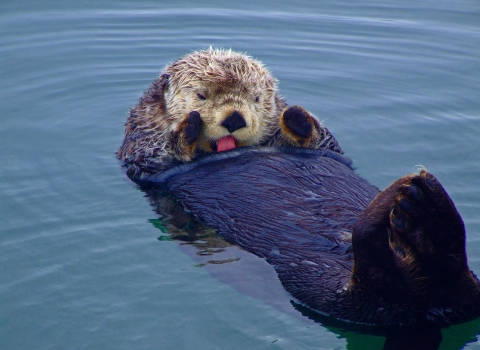The U.S. Fish and Wildlife Service released today a final land protection plan which allows for the protection of up to 700,000 acres of wildlife habitat in the Southern High Plains region along the Texas-New Mexico border as part of the Muleshoe National Wildlife Refuge. Within this new limited acquisition boundary, the Service would work with willing sellers to expand conservation through fee title and easement acquisitions.
Investment in, and expansion of, the National Wildlife Refuge System furthers the Biden-Harris administration’s work to support community-driven efforts to conserve and restore the nation’s lands and waters through America the Beautiful initiative. Under Secretary Haaland’s leadership, the Department has also established four new Refuges.
The Service worked with partners to identify a conservation strategy and the limited acquisition boundary that will support sandhill crane, pronghorn, and lesser prairie-chicken, as well as a full suite of other wildlife that relies on the grassland and wetland habitat types. The plan encompasses a portion of the Southern High Plains region in New Mexico and Texas where habitat for sandhill crane, pronghorn, and lesser prairie-chicken remains. This habitat can be readily enhanced through connectivity corridors and preservation of existing large block grasslands, playa wetlands, and saline lakes.
"This plan is a critical step in protecting the future of the Southern High Plains for iconic species like the sandhill crane and lesser prairie-chicken," said Amy Lueders, the Service's Southwest Regional Director. "These vast grassland landscapes provide essential habitat for wildlife while also providing benefits like clean water filtration and carbon sequestration, which are essential for both the environment and human well-being."
This area is part of the Central Grasslands that span more than 700 million acres across Indigenous nations, Canada, the United States, and Mexico. Unfortunately, much of these grasslands have been lost. The Service is working alongside partners to conserve and restore this vital landscape.
The expansion will help addresses impacts from changing landscape drivers including energy development, habitat fragmentation, aquifer decline, and shrinking wetland habitat. Protected lands could be more resilient to the impacts of a changing climate.
A limited acquisition boundary better positions the conservation community to address the current and future needs of wildlife and wildlife habitat in the Southern High Plains region as opportunities for future conservation arise. The approved expansion boundary, which will guide future refuge acquisitions, includes priority areas where conservation efforts will have the highest anticipated benefit to wildlife and habitat. It does not add acreage to existing refuge ownership. The Service develops Land Protection Plans to fully evaluate the establishment of new refuges and major expansions to existing refuges.
The final Land Protection Plan and approval documents can be accessed at ServCat using the plan code 154545.
View our Frequently Asked Questions about this plan.
This year marks the 121st anniversary of the National Wildlife Refuge System – an unparalleled network of 571 national wildlife refuges, 38 wetland management districts and 5 marine national monuments. There is a national wildlife refuge national wildlife refuge
A national wildlife refuge is typically a contiguous area of land and water managed by the U.S. Fish and Wildlife Service for the conservation and, where appropriate, restoration of fish, wildlife and plant resources and their habitats for the benefit of present and future generations of Americans.
Learn more about national wildlife refuge within an hour’s drive of most major metropolitan areas – hosting some 67 million visits every year – almost all offering free admittance year-round. National wildlife refuges provide vital habitat for thousands of species and access to world-class recreation, from fishing, hunting and boating to nature watching, photography, and environmental education.



